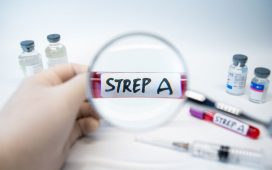Doubling to tripling of odds seen when temperatures reach extreme heat levels
By Lori Solomon HealthDay Reporter
MONDAY, Nov. 18, 2024 (HealthDay News) — There is a dose-response relationship between rising outdoor temperatures and increased atrial fibrillation (AF) events, according to a study presented at the American Heart Association Scientific Sessions 2024, held from Nov. 16 to 18 in Chicago.
Barrak Alahmad, M.D., Ph.D., M.P.H., from Harvard University in Boston, and colleagues examined the role of emerging environmental risk factors, like extreme heat driven by climate change. The Medtronic Product Surveillance Registry was used to identify 2,313 patients who received a cardioverter-defibrillator or cardiac resynchronization therapy defibrillator device implant (2016 to 2023) and had an atrial arrhythmic event.
The researchers found significantly fewer AF episodes in the early morning hours (12 to 7 a.m.) compared with normal working hours (8 a.m. to 5 p.m.). There were also significantly fewer AF episodes occurring on Saturday and Sunday versus weekdays. Compared with locally optimal temperatures across the United States (those associated with least odds; between 5 to 8 degrees Celsius), the odds of AF events increased when outdoor temperatures were 39, 40, and 41 degrees Celsius. The models did not improve with lagging temperature exposure. For AF episodes >30 minutes, results were similar.
“This study highlights the urgent need to consider emerging environmental factors, such as climate change-induced heat, in managing and preventing AF,” the authors write.
Copyright © 2024 HealthDay. All rights reserved.








